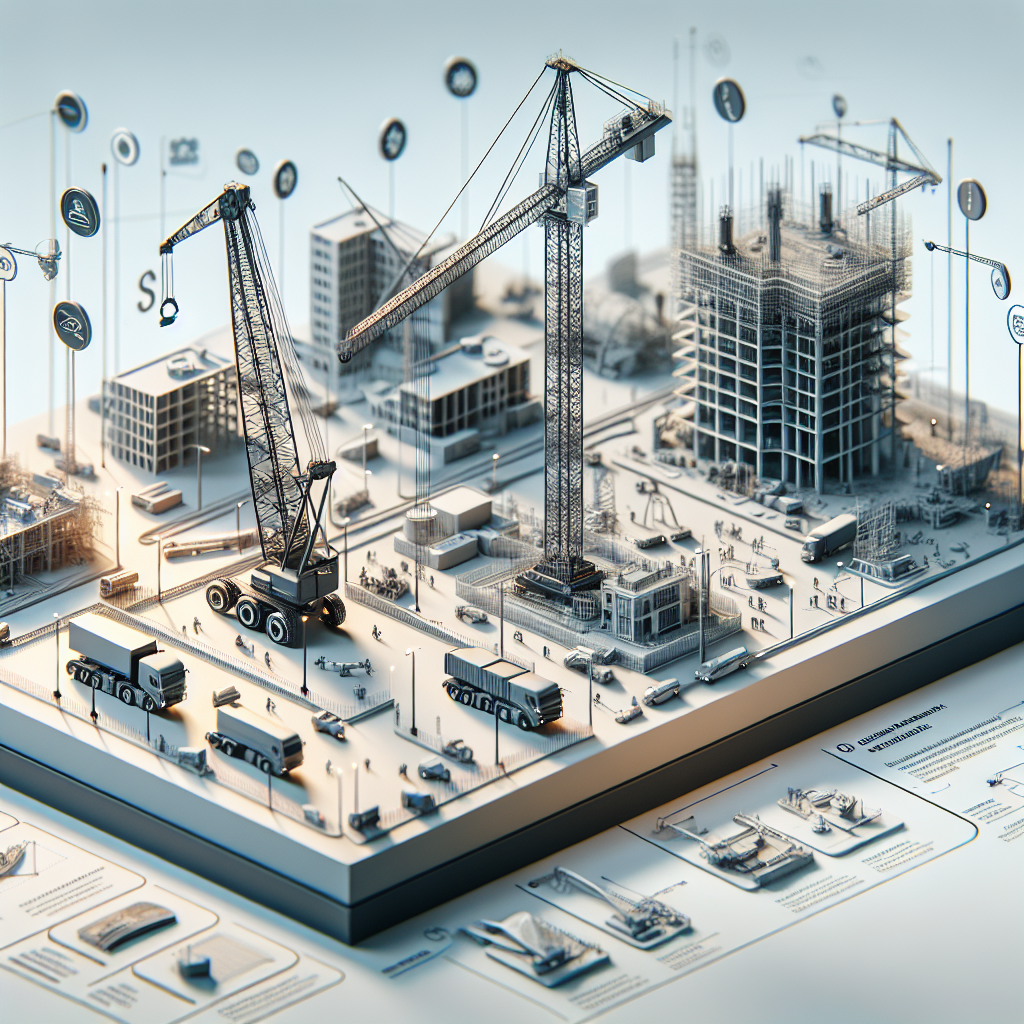Understanding the Differences Between Mobile and Fixed Cranes in Construction
The construction industry relies heavily on cranes to lift, move, and position heavy materials and equipment safely and efficiently. Two of the most common types of cranes used on job sites are mobile cranes and fixed cranes, each with its own unique features, advantages, and best-use scenarios. Choosing between a mobile crane and a fixed crane is a crucial decision that can impact project timelines, costs, and safety. In this comprehensive guide, we will delve into the comparison of mobile cranes vs fixed cranes for construction projects, exploring their functions, benefits, disadvantages, and ideal applications.
What is a Mobile Crane?
Mobile cranes are versatile, wheeled or crawler-mounted machines designed for lifting and transporting heavy loads. Unlike fixed cranes, mobile cranes can be easily relocated from one job site to another, making them ideal for projects that require flexibility and quick setup. Their main components include a telescopic or lattice boom, a rotating superstructure, and hydraulic systems for movement and lifting.
- Types of mobile cranes:
- Truck-mounted cranes
- Rough terrain cranes
- All-terrain cranes
- Crawler cranes
- Carry deck cranes
- Key features: Portability, rapid assembly, adaptability to different terrains, and ability to navigate confined spaces.
What is a Fixed Crane?
Fixed cranes, also known as stationary cranes, are permanently or semi-permanently installed at a construction site. These cranes offer greater lifting capacity and height than most mobile cranes, making them the preferred choice for high-rise buildings, large-scale infrastructure projects, and tasks requiring repetitive lifts in a fixed location. Common types of fixed cranes include tower cranes, gantry cranes, and overhead cranes.
- Types of fixed cranes:
- Tower cranes
- Gantry cranes
- Overhead cranes
- Level luffing cranes
- Key features: High load capacity, stability, extensive reach, and suitability for long-term projects.
Mobile Crane vs Fixed Crane: Pros and Cons
| Feature | Mobile Crane | Fixed Crane |
|---|---|---|
| Mobility | Highly mobile; easily transported and set up at different locations. | Stationary; remains at one location for duration of project. |
| Lifting Capacity | Moderate to high, depending on model; lower than tower cranes. | Very high; capable of lifting extremely heavy loads. |
| Setup Time | Minimal; can be operational quickly. | Requires significant assembly and disassembly time. |
| Terrain Adaptability | Can operate on uneven ground; suitable for various environments. | Requires stable, prepared ground or foundation. |
| Cost | Lower initial setup cost; rental available. | Higher initial investment; cost-effective for long-term use. |
| Reach/Height | Limited; suitable for low to mid-rise buildings. | Extensive; ideal for high-rise construction. |
LSI Keywords and Their Importance
When comparing mobile crane vs fixed crane for construction, several related (LSI) keywords come into play, such as crane rental, lifting equipment, construction site logistics, crane capacity, and material handling. Understanding these terms helps stakeholders make informed decisions regarding equipment selection, safety, and project efficiency.
Typical Applications and Best Use Cases
When to Use a Mobile Crane
- Short-term construction projects
- Multiple sites requiring quick relocation
- Events and temporary structures
- Industrial maintenance
- Remote or difficult-to-access locations
When to Use a Fixed Crane
- High-rise building construction
- Large-scale infrastructure projects (bridges, dams)
- Repetitive heavy lifting at a single point
- Projects with long durations
How to Choose Between Mobile and Fixed Cranes
- Project Duration: Short-term projects favor mobile cranes, while long-term builds benefit from fixed cranes.
- Load Requirements: Assess the maximum weight and reach needed.
- Site Conditions: Consider terrain, accessibility, and available space.
- Budget Constraints: Evaluate initial costs, rental options, and operational expenses.
- Regulatory Compliance: Ensure all equipment meets local safety and operational standards.
Safety Aspects of Mobile and Fixed Cranes
Both crane types require rigorous safety protocols. Mobile cranes must be stabilized with outriggers and operated on suitable ground, while fixed cranes need secure anchoring and regular inspections. Proper training, adherence to load charts, and use of certified operators are essential for minimizing risks and ensuring job site safety.
Conclusion: Making the Right Choice for Your Construction Project
The debate of mobile crane vs fixed crane for construction ultimately depends on the unique demands of your project. Mobile cranes deliver unmatched flexibility and speed for dynamic, short-term jobs, while fixed cranes provide the strength and reach needed for monumental, long-term constructions. Carefully evaluating your project’s needs, timeline, and budget will guide you towards the most effective and safe lifting solution.
